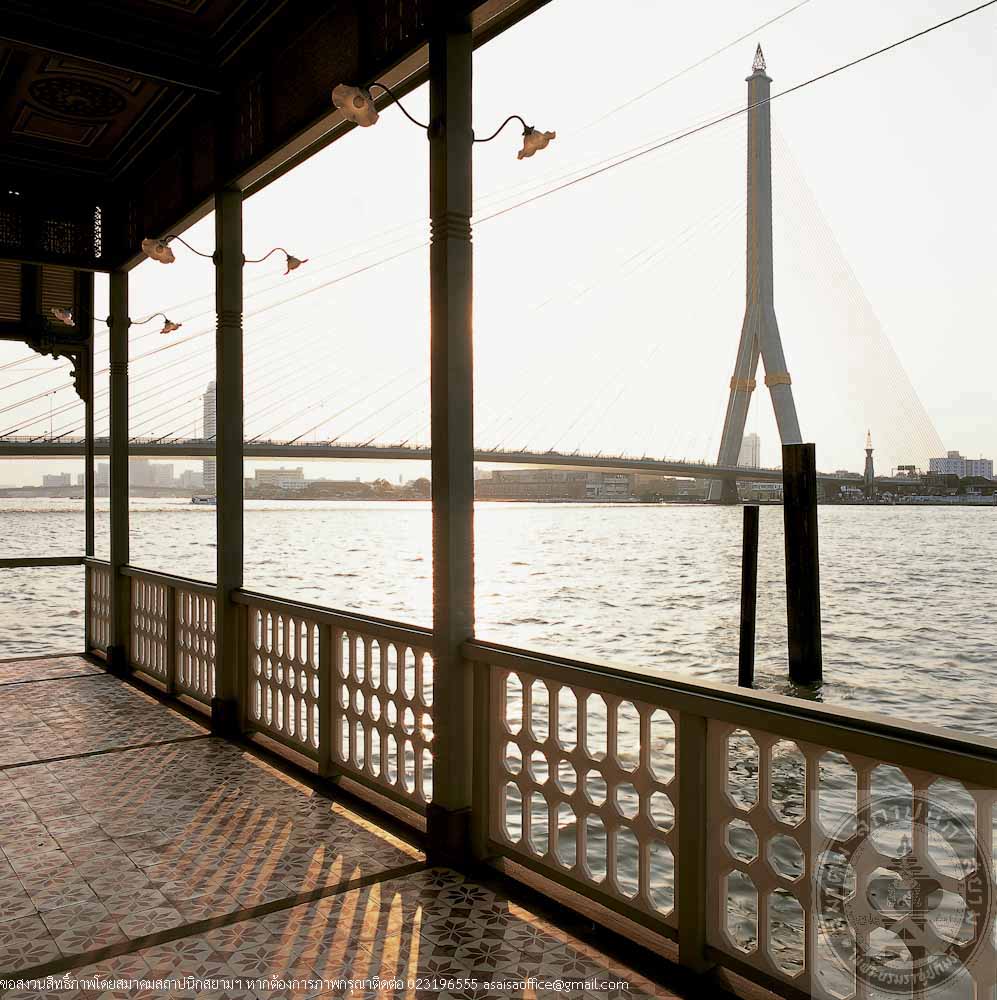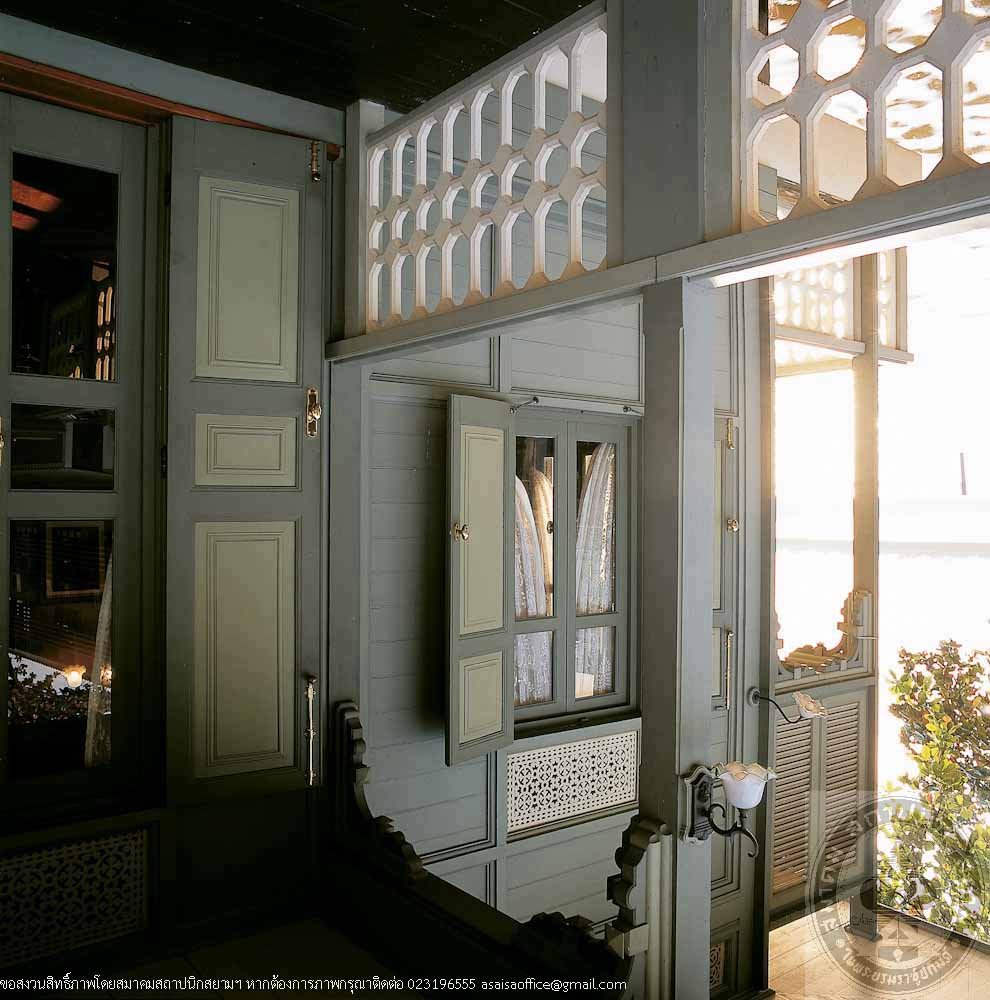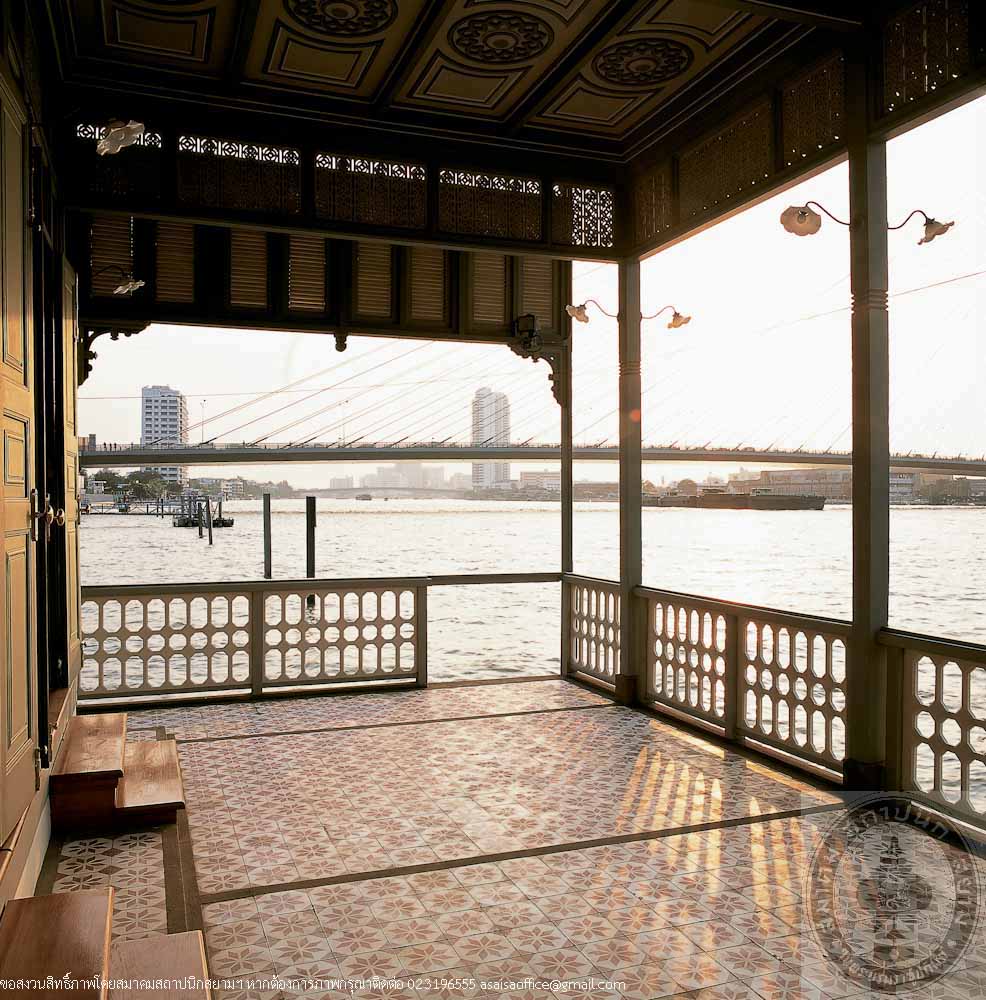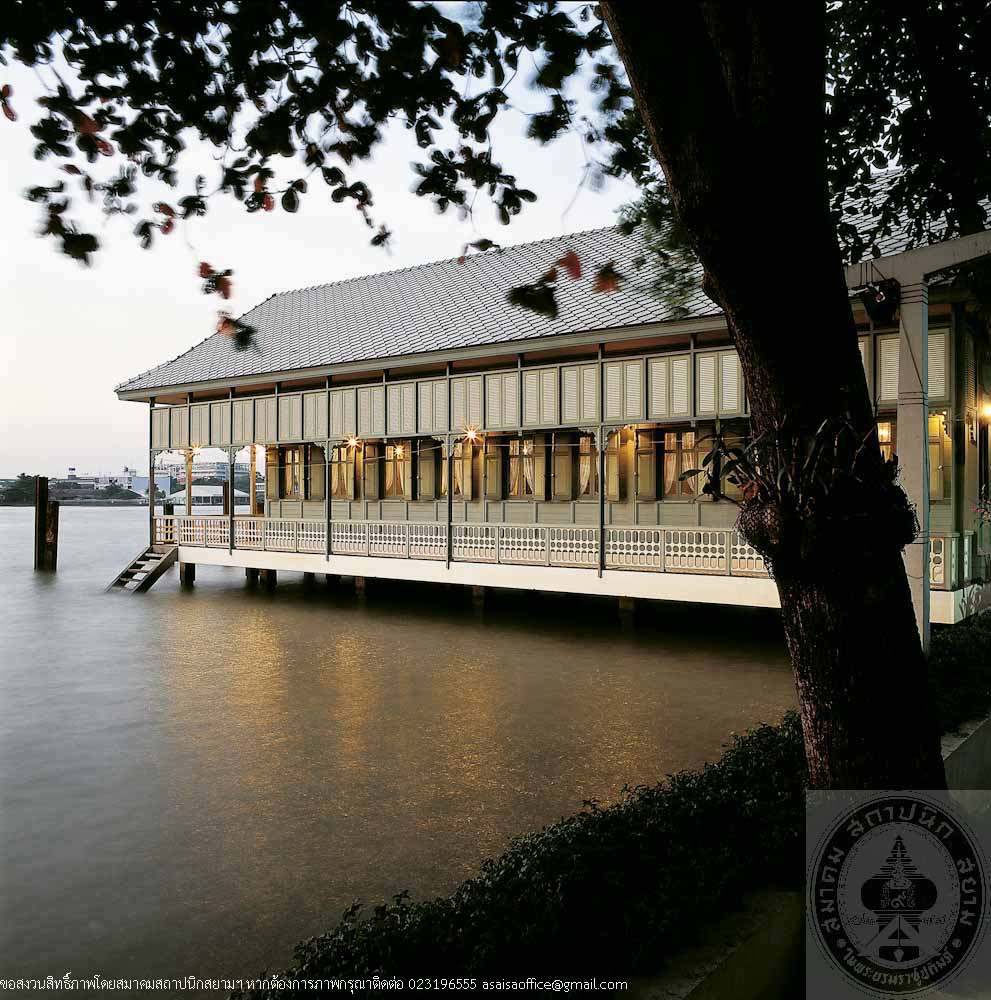ตำหนักริมน้ำ ธนาคารแห่งประเทศไทย
ตำหนักริมน้ำ ธนาคารแห่งประเทศไทย
ที่ตั้ง ธนาคารแห่งประเทศไทย 273 ถนนสามเสน เขตพระนคร กรุงเทพฯ
สถาปนิก/ผู้ออกแบบ นายเอมิลิโอ โจวานนี กลอลโล (Emilio Giovanni Gollo)
ผู้ครอบครอง ธนาคารแห่งประเทศไทย
ปีที่สร้าง พ.ศ. 2457
ปีที่ได้รับรางวัล พ.ศ. 2544
ประวัติ
ตำหนักริมน้ำ ตั้งอยู่ริมน้ำเจ้าพระยาโดยก่องสร้างยื่นออกไปในแม่น้ำ ตำแหน่งที่ตั้งอยู่ในเขตวังเทวะเวสม์ ซึ่งปัจจุบันเป็นส่วนหนึ่งของธนาคารแห่งประเทศไทย ตัวอาคารเป็นเรือนไม้ รูปแบบสถาปัตยกรรมโคโลเนียล ออกแบบโดยนายเอมิลิโอ โจวานนี กอลโล (Emilio Giovanni Gollo) วิศวกรชาวอิตาลี ผนังตกแต้งด้วยการตีคิ้วไม้แบ่งผนังเป็นช่วงจังหวะ ตัวเรือนมีหน้าต่างโดยรอบ ด้านทิศเหนือและทิศใต้เป็นระเบียงอยู่หลังช่วงเสาลอยติดตั้งแผงกันแดดเกล็ดไม้โปร่ง รับด้วยไม้ฉลุตกแต่ง บรรยากาศของเรือนดูโปร่งสบายและกะทัดรัดสวยงาม
ตามประวัติ ตำหนักนี้เคยเป็นที่ประทับของพระธิดาพระองค์หนึ่งในสมเด็จพระเจ้าบรมวงศ์เธอกรมพระยาเทวะวงศ์วโรปการ เสนาบดีพระองค์แรกของกระทรวงการต่างประเทศในรัชสมัยพระบาทสมเด็จพระจุลจอมเกล้าเจ้าอยู่หัว พระธิดาพระองค์นี้ประชวรเป็นโรคติดต่อจึงได้จัดให้ประทับที่ตำหนักแยกต่างหาก หลังจากพระองค์ท่านสิ้นพระชนม์ เรือนก็ถูกทิ้งร้าง ต่อมาได้ใช้เป็นที่ทำการกองมาลาเรียของกระทรวงสาธารณสุข จนปี 2539 จึงได้โอนมาเป็นส่วนหนึ่งของธนาคารแห่งประเทศไทย ซึ่งได้ดำเนินการบูรณะเพื่อใช้เป็นเรือนรับรองและจัดเลี้ยงมาจนปัจจุบัน

ตำหนักริมน้ำ ธนาคารแห่งประเทศไทย

ตำหนักริมน้ำ ธนาคารแห่งประเทศไทย

ตำหนักริมน้ำ ธนาคารแห่งประเทศไทย

ตำหนักริมน้ำ ธนาคารแห่งประเทศไทย
-

ตำหนักริมน้ำ ธนาคารแห่งประเทศไทย
-

ตำหนักริมน้ำ ธนาคารแห่งประเทศไทย
-

ตำหนักริมน้ำ ธนาคารแห่งประเทศไทย
-

ตำหนักริมน้ำ ธนาคารแห่งประเทศไทย
River Pavilion, Bank of Thailand
Location Bank of Thailand, 273 Samsen Road, Khet Phra Nakhon, Bangkok
Architect/Designer Mr. Emilio Giovanni Gollo
Proprietor Bank of Thailand
Date of Construction 1914 AD.
Conservation Awarded 2001 AD
History
The River Pavilion is located in the compound of the Bank of Thailand. It is a wooden house, Colonial style designed by Mr. Emilio Giovanni Gollo, an Italian engineer. The walls are decorated with battens and fitted with windows on all sides. The walls are decorated with battens and fitted with windows on all sides. The north and south are colonnades, between the columns are fitted with wooden louvers sunshades and decorated with wooden fretwork brackets. It is airy, comfortable and beautiful in compact scale.
As history mentions, the house was built as a residence of a princess, daughter of Prince Krommaphraya Thewawongwaropakan, the first Minister of Foreign Affairs in King Rama V’s reign. The princess suffered an infectious disease thus she was moved to this house. After she passed away, the house was deserted and at one time was uses as Malaria Centre, Ministry of Rublic Health. In 1996, it was acquired by the Bank of Thailand who has it restored and used as a reception hall until today.